Introduction
Water features have long been cherished elements in architectural and landscape designs, seamlessly integrating the tranquil allure of water with the tangible, constructed surroundings. From the rhythmic murmurs of trickling fountains in ancient courtyards to the modern cascading walls in urban plazas, the inclusion of water has been a design constant, evoking senses of calm, luxury, and connection to nature.
Architectural and garden designs, being both art and science, require materials that not only look aesthetically pleasing but also stand the test of time. In this regard, few materials have garnered as much admiration and utility as limestone. This sedimentary rock, which has been used in constructions for thousands of years, possesses a natural elegance. Its subtle hues, ranging from creamy whites to soft grays, and its nuanced texture make it a versatile and captivating choice.
But beyond its aesthetic appeal, limestone boasts of properties that render it particularly suitable for water fountains. Its durability, porosity, and unique chemical composition make it an architect's and landscaper's dream material, especially when designing fountains, ponds, and other water-centric structures. In this exploration, we will delve into the myriad reasons limestone stands out as the premier choice for water feature constructions, offering both beauty and functionality.

Historical Use of Limestone in Water Features
Limestone, formed over millions of years from the compacted shells, coral, and marine organisms, has been interwoven with human history, especially when it comes to structures associated with water. Its deep-rooted history in water-based constructions is testament to its enduring qualities and aesthetic charm.
Diving into the annals of architectural history, we find that ancient civilizations, with their profound understanding of materials, had a distinct preference for limestone, especially in the realms of water features. The beauty and resilience of this stone made it a clear favorite among ancient builders, who intuitively grasped its advantages in water-related settings.
Ancient Egyptian Legacy
The ancient Egyptians, one of the earliest civilizations to master the art of construction, extensively used limestone in their monumental structures. The vicinity of the Nile River, with its abundant water, meant that many of these structures were closely associated with water. The base of the Sphinx, for example, which has been eroded over time, demonstrates the impact of water on limestone. Furthermore, several temples and ceremonial baths were often adorned with limestone, showcasing intricate carvings and designs.
Roman Architectural Marvels
The Romans, with their vast empire and architectural prowess, used limestone to construct several of their aqueducts, fountains, and baths. The famed Roman baths often incorporated limestone due to its capability to resist water erosion and its ease of carving, allowing for ornate decorations and inscriptions. The Trevi Fountain, although constructed much later, exemplifies the lasting Roman tradition of using limestone in grand garden water fountains.
Other Noteworthy Mentions
Apart from these empires, other ancient civilizations, from the Greeks with their idyllic fountains to the Mughals with their serene water gardens, recognized the worth of limestone. The famed Alhambra in Spain, with its intricate water features and pools, employed limestone for its beauty and functional qualities.
Limestone’s longstanding relationship with water-based constructions isn't just a matter of coincidence. Its properties made it the material of choice for several ancient civilizations that understood the importance of durable and aesthetically pleasing structures. This historical legacy adds another layer of depth to the stone's charm, connecting our modern water fountains with the grandeur and wisdom of the past.
Physical Properties of Limestone
Limestone, often revered for its rustic beauty, is not just a feast for the eyes. Its physical properties play a significant role in making it an outstanding choice for water features, be they cascading fountains or serene ponds. Let's delve into these characteristics and unveil what truly lies behind the stone’s appeal.
Porosity – A Balance of Absorption and Flow
One of limestone’s defining attributes is its porosity. The stone is naturally permeable, which means it has the ability to absorb water. At first glance, one might wonder if this makes it less suitable for water features. On the contrary, this very porosity lends limestone some unique advantages. It can help regulate the flow of water, reducing the speed and force of cascades, which creates a more tranquil and natural flow. Furthermore, its porous nature allows for a natural filtration process, as the stone can trap microscopic particles, leading to clearer water in ponds and pools.
Durability – Standing the Test of Time
Limestone is formed over millions of years under heat and pressure, and this extensive geological process gifts it with remarkable durability. While it's a softer stone compared to granite or marble, its compactness ensures a long-lasting life, especially when used in water fountains. Limestone's ability to withstand the continuous flow of water without eroding rapidly makes it a popular choice for outdoor settings.
Resistance to Weathering – Nature’s Challenge
When opting for an outdoor water feature, it's imperative to choose a material that can brave the elements. Limestone, with its inherent resilience, stands tall against weather challenges. It can endure varying temperature changes, from scorching summers to frosty winters. This adaptability is augmented by its resistance to weathering effects, such as acid rain or general atmospheric wear. Over time, rather than diminishing in beauty, limestone develops a patina that only adds to its charm, making each water feature a living piece of art that evolves with time.
The physical attributes of limestone don’t just make it a practical choice for water features, but they also enhance its aesthetic allure. The gentle, meandering flow of water over this ancient stone brings to life its innate characteristics, creating a harmonious blend of function and beauty. Whether you're listening to the soft trickle of water over a limestone ledge or admiring its steadfastness against the elements, it's evident that nature crafted this stone with a purpose in mind.
Aesthetic Appeal: The Natural Look
When discussing the beauty of outdoor spaces, be it a sprawling garden or a cozy patio, the materials we choose play a crucial role in dictating the ambiance. Limestone, in all its raw and untouched glory, stands out as a gem in the realm of natural materials. Let's explore the visual magnetism of this stone and understand how it elevates the aesthetics of our outdoor havens.
Textures that Narrate Tales
Each slab of limestone is a canvas, telling tales of ages past. The subtle undulations, pits, and fossils imprinted on its surface give limestone a tactile appeal. This texture isn't just delightful to touch, but it also creates captivating patterns when water flows over it, producing shimmering reflections and gentle ripples. The texture can transform a simple water feature into an ever-changing art piece, capturing shadows and light in different ways as the sun moves across the sky.
A Palette Inspired by Nature
Limestone isn’t confined to a monochrome spectrum. Instead, it boasts a range of colors – from soft beiges and creamy whites to deep blues and moody grays. These natural hues allow limestone water fountains to blend seamlessly with their surroundings. Whether placed among vibrant floral beds or set against minimalist modern architecture, limestone's versatile color palette complements various design schemes. As the stone ages and interacts with the elements, it often undergoes a color transformation, developing a richer, deeper hue, which adds an evolving beauty to the landscape.
Enhancing Garden and Patio Vibes
There's an undeniable romance between gardens, patios, and natural materials. Limestone, with its rustic and earthy charm, accentuates this bond. When incorporated into water features, it not only becomes a focal point but also sets the tone for the space. Its natural look creates a bridge between man-made structures and the organic sprawl of nature. The result? A harmonized environment where everything feels interconnected, enhancing the tranquility and peace that gardens and patios offer.
The aesthetic virtues of limestone make it more than just a construction material. It's an embodiment of nature's artistry, capable of transforming spaces into picturesque settings. A limestone water feature becomes a living sculpture, changing, aging, and interacting with its surroundings, making every moment spent near it a sensory delight.
The Chemical Makeup of Limestone
Limestone is more than just an aesthetically pleasing stone; its chemical composition bestows upon it several properties that enhance its suitability for water features. At a molecular level, limestone is a testament to nature's brilliance, offering both resilience and adaptability. Let's delve deeper into this stone's chemistry to understand its interactions with water and its inherent advantages.
Limestone's Heart: Calcite
At the core of limestone's composition lies calcite, a form of calcium carbonate (CaCO₃). Calcite is essentially the crystalline structure that gives limestone its rigidity. Formed under eons of marine sedimentary processes, this calcium-rich foundation not only confers strength and durability to the stone but also contributes to its distinctive texture and sheen.
Interactions with Water: An Age-Old Relationship
When limestone comes into contact with water, it doesn’t remain passive. Due to its calcite content, limestone has a slight solubility in water, especially if the water is slightly acidic. Over long periods, this solubility can lead to the stone's slow erosion, crafting unique shapes and channels that become part of the stone's allure in water fountains. Think of natural limestone caves with stalactites and stalagmites sculpted by dripping water, showcasing limestone's dynamic relationship with H₂O.
Resistance to Algae and Mold: Nature's Defense Mechanism
One remarkable trait of limestone is its natural ability to resist the growth of algae and mold. The reason behind this is twofold:
- pH Levels: Limestone tends to raise the pH of the water, creating a slightly alkaline environment. Many algae and molds prefer acidic conditions, and an elevated pH can deter their growth.
- Microscopic Texture: Limestone’s surface, while seemingly smooth, has microscopic textures and pores that can disrupt the easy colonization and spread of algae and mold spores, hindering their growth.
However, it's essential to note that while limestone has a natural resistance, it's not entirely immune. Regular maintenance and cleaning, combined with water circulation and filtration, can further ensure that water features remain clear and pristine.
Limestone's chemical makeup isn't just about durability and beauty; it's also about harmony with water. Its ability to interact with, adapt to, and even resist certain challenges posed by water makes it an invaluable ally in the realm of water fountains, offering both function and form.
Sound and Sensation: The Acoustic Benefits
The calming pitter-patter of water as it trickles down a water feature, or the gentle cascade of a waterfall, can do wonders for the soul. While the sight of water flowing over a stone is visually pleasing, the sound it generates is equally, if not more, therapeutic. Limestone, given its unique density and structure, has particular acoustic properties that contribute to the richness of these sounds. Let's explore the sonorous symphony that arises when water meets limestone and the benefits it brings to our mental space.
Limestone’s Density and Sound Resonance
Limestone's density is one of the primary factors contributing to its acoustic charm. Denser materials, like limestone, tend to produce deeper, more resonant sounds. When water falls on or flows over the stone, this density causes the sound to reverberate, producing a depth that is both melodious and calming. This is why many prefer the sound of water cascading over limestone compared to metals or other stones – the resonance is truly unparalleled.
Texture and Tonal Variation
The texture of limestone, with its porous nature and varying formations, also plays a role in the acoustic output. Different textures produce different sounds – a smooth surface might create a soft shimmering effect, while a rougher texture could result in a babbling brook sound. This varied soundscape is like nature’s orchestra, where each tiny stream of water finds its note on the limestone’s surface.
The Therapeutic Power of Limestone-infused Sounds
Beyond the mere auditory pleasure, the sound of water interacting with limestone can offer therapeutic benefits. Several studies have shown that the sound of flowing water can reduce stress, lower heart rates, and promote feelings of tranquility. This is part of a broader field of study known as ecoacoustics, which delves into the relationship between sounds in the environment and human wellbeing.
In spaces where limestone water features are installed, people often find themselves instinctively drawn to the sound. It acts as white noise, drowning out the cacophonies of urban life and creating an oasis of peace. Whether used in a personal garden or public space, the combination of limestone and water offers a retreat for the ears, promoting relaxation and mindfulness.
In the union of limestone and water, we find a beautiful intersection of sight and sound. The stone's unique acoustic qualities not only elevate the aesthetic experience but also touch a deeper, more primal part of us, reminding us of nature's ability to heal, comfort, and inspire. In the hustle and bustle of modern life, such sanctuaries of sound become all the more vital, making limestone garden fountains a cherished addition to any environment.
Eco-Friendly Aspects of Limestone Water Features
Limestone, a naturally occurring sedimentary rock, has been employed in construction and design for millennia, not merely for its beauty and durability but increasingly for its eco-friendly attributes. In the context of water features, limestone stands out not only for the serene ambiance it can create but also for the minimal environmental impact of its sourcing and use. Let’s dive into the green side of this majestic stone.
Natural Sourcing and Minimal Processing
Limestone forms over thousands of years from the accumulation of shells, bones, and other calcium-rich goods, making it a naturally sourced material. When it comes to extracting and processing limestone, the energy required is considerably lower than for many other building materials. The absence of high-temperature kilns in its processing means a reduced carbon footprint, making limestone an environmentally preferable option.
Longevity Equals Less Waste
One of the standout environmental benefits of limestone is its longevity. A limestone water feature, given proper care, can last generations. This long life cycle reduces the need for replacement and, consequently, decreases waste. Unlike items that might need frequent replacing, contributing to landfill waste and increased manufacturing emissions, a limestone structure remains a long-term fixture, conserving resources.
Natural Resistance and Reduced Chemical Usage
Limestone's natural resistance to mold and algae can reduce the need for chemical treatments. While other materials might require regular applications of potentially harmful chemicals to keep them clean and algae-free, limestone's inherent properties provide a cleaner solution. This not only maintains the purity of the water but also means fewer chemicals infiltrating the ground and water table.
Potential for Recycling
At the end of its life cycle, limestone can be repurposed or recycled. Ground limestone is often used in agriculture to neutralize acidic soils. Additionally, crushed limestone can be utilized in road construction or as an aggregate in concrete mixes. This recyclability ensures that when a limestone water feature is no longer in use, it doesn’t necessarily translate to waste but can find a new purpose, further endorsing its sustainable attributes.
In an era where sustainability is not just a trend but a necessity, the choice of materials in construction and design becomes crucial. Limestone, with its myriad of eco-friendly facets, emerges as a frontrunner, especially in the domain of water fountains. Combining aesthetics with environmental responsibility, limestone water fountains exemplify how we can make choices that are both beautiful for our homes and gardens and beneficial for our planet.
Maintenance and Longevity of Limestone Water Features
Limestone's timeless beauty and sturdiness make it a favored choice for water features, but like all natural materials, it has its vulnerabilities. Proper care and maintenance can not only accentuate its natural charm but also ensure it stands the test of time. Here, we delve into the common wear and tear concerns associated with limestone and offer guidance on how to best maintain and protect these water features.
Understanding Limestone's Vulnerabilities
At its core, limestone is a porous rock, making it susceptible to erosion, especially when exposed to acidic substances. Rainwater, especially in areas with high pollution, can carry acidic elements which, over time, can cause the stone to wear away. Additionally, the constant flow of water, especially if it's hard water with minerals, can sometimes leave deposits on the stone, affecting its appearance.
Preventing Erosion and Wear
- Water Quality: Ensuring the water used in your limestone water feature is soft can prevent mineral deposits. Installing a water softening system or periodically treating the water can be beneficial.
- Regular Cleaning: Gentle cleaning with a soft brush can prevent buildup of algae, moss, or mineral deposits. It's essential to avoid abrasive cleaners or high-pressure water jets as they can damage the stone's surface.
- Sealing: Applying a sealant can offer a protective layer, making the limestone less porous and more resistant to wear. Ensure you use a sealant suitable for limestone and outdoor use.
Enhancing Longevity Through Maintenance
- Routine Inspections: Periodically inspecting the water feature can help identify potential issues early on. Look for cracks, chips, or any signs of wear and address them promptly.
- Water Flow: Ensuring a consistent water flow can prevent the stagnation which can lead to algae growth. Adjusting the flow can also help in reducing excessive wear in one particular area.
- Winter Care: If you live in a region with freezing temperatures, it's essential to drain the water feature during the colder months to prevent water from freezing and expanding within the stone, which can cause cracks.
- Balancing pH: Regularly checking and adjusting the water's pH level can prevent the accelerated erosion of limestone. Ideally, the pH should be neutral.
Limestone water fountains, with their inherent elegance and tranquility, can be a focal point in gardens and patios. With a bit of care and attention to detail, these fountains can not only retain their beauty but also serve as enduring testament to the timeless appeal of natural stone. Their longevity, paired with regular maintenance, ensures that they continue to captivate and soothe for years to come.
Modern Innovations: Limestone in Contemporary Design
Limestone, with its storied past and versatile nature, has been a cornerstone in architectural and landscape design for centuries. Yet, as with many classical materials, modern designers and innovators are finding fresh, avant-garde ways to incorporate limestone into their creations. Here, we explore the renaissance of limestone in contemporary water feature designs and the exciting fusion of technology with its timeless aesthetics.
Limestone's Modern Makeover
- Dynamic Forms: Today's designers are moving beyond traditional shapes and forms. With advancements in sculpting techniques and tools, limestone water features are now available in a plethora of designs, from sleek and minimalistic to abstract and conceptual, catering to a wide range of aesthetic preferences.
- Incorporating Light: The texture and color of limestone make it an ideal medium for playing with light. Modern water features often integrate LED lighting, which reflects off the stone and water, creating captivating light shows during nighttime and enhancing ambiance.
- Interactive Features: In the age of interactivity, some limestone water features are now designed to be interactive. They may include sensors that alter the water flow based on movement or touch, creating a dynamic experience for the user.
Blending Technology with Tradition
- Automated Systems: Modern limestone water features often come equipped with automated systems that allow users to control water flow, lighting, and even music via smartphones or voice commands, ensuring a personalized experience.
- Eco-technologies: With a growing emphasis on sustainability, new water features incorporate eco-technologies such as solar panels for energy or systems that purify and recycle water, reducing wastage and environmental impact.
- Digital Carving: Modern technology, like 3D printing and digital carving tools, has opened up avenues for intricate designs that were once considered unachievable. These tools allow for precision and detail, bringing the designer's vision to life with unparalleled accuracy.
Limestone, while rooted deeply in history, has proven its adaptability and relevance in modern design. As designers push the boundaries of creativity, limestone stands resilient, offering both the authenticity of nature and the versatility to mold into contemporary visions. This balance between the past and the present, the natural and the technological, ensures that limestone water features remain both a tribute to tradition and a nod to the future.
Conclusion
Limestone, with its rich tapestry of history, beauty, and functionality, has cemented its place as a revered choice in the realm of water features. Whether one is drawn to its timeless elegance or the profound scientific advantages it boasts, this stone's multifaceted appeal is undeniable.
Frequently Asked Questions
Why is limestone a popular choice for water features in architectural and garden design?
Limestone is a revered choice due to its timeless elegance, physical durability, and scientific advantages. Its nuanced textures and earthy tones seamlessly complement various architectural and landscape designs, and its physical properties ensure longevity and consistent performance.
Does limestone have any unique chemical properties that benefit water features?
Yes, limestone's calcite composition ensures its integrity over time. Furthermore, it naturally resists the growth of mold and algae due to its interactions with water. This means water features made from limestone require less maintenance and offer a healthier environment.
Are there any ecological advantages to using limestone in water features?
Absolutely! Limestone is sourced naturally, making it an eco-friendly choice. Its potential for recycling further emphasizes its sustainable aspects, positioning limestone as a responsible option for those aiming to reduce their environmental footprint.
How does limestone contribute to the sound quality of water features?
Limestone's unique density and structure play a pivotal role in producing the soothing sounds of cascading water. The stone's physical properties create harmonious soundscapes, transforming spaces into peaceful retreats.
Is limestone adaptable to modern design trends?
Yes, limestone's versatility allows it to be incorporated into contemporary designs. With advancements in technology, limestone water features now include modern innovations such as dynamic forms, integrated lighting, and interactive elements, blending tradition with cutting-edge design.
Related Articles
From Quarry to Garden: The Journey of Limestone Water Features
Concrete Water fountains- a Comprehensive Guide
Guide on Tiered Water Fountains


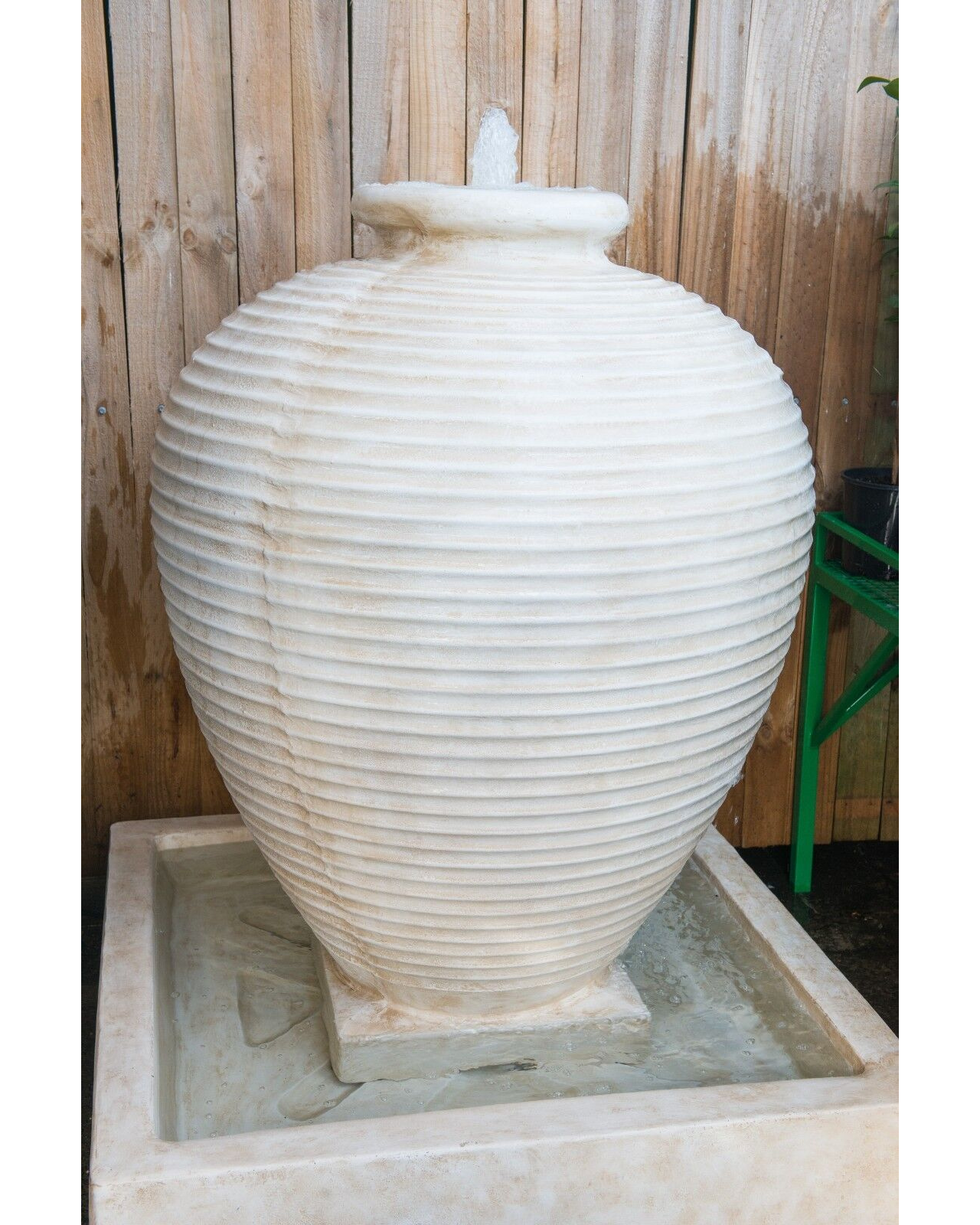
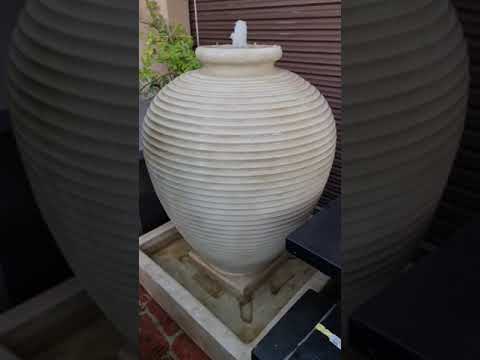
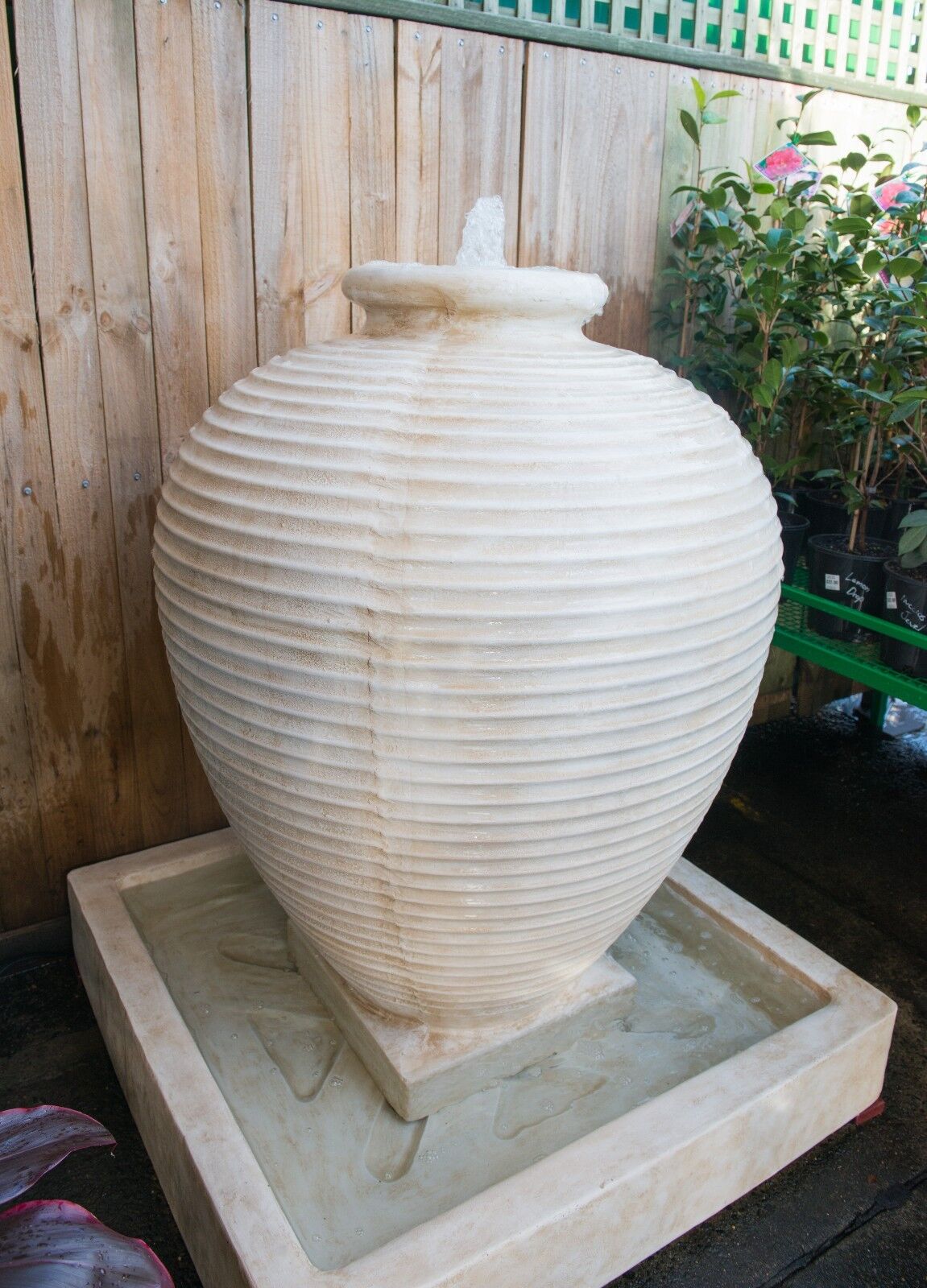
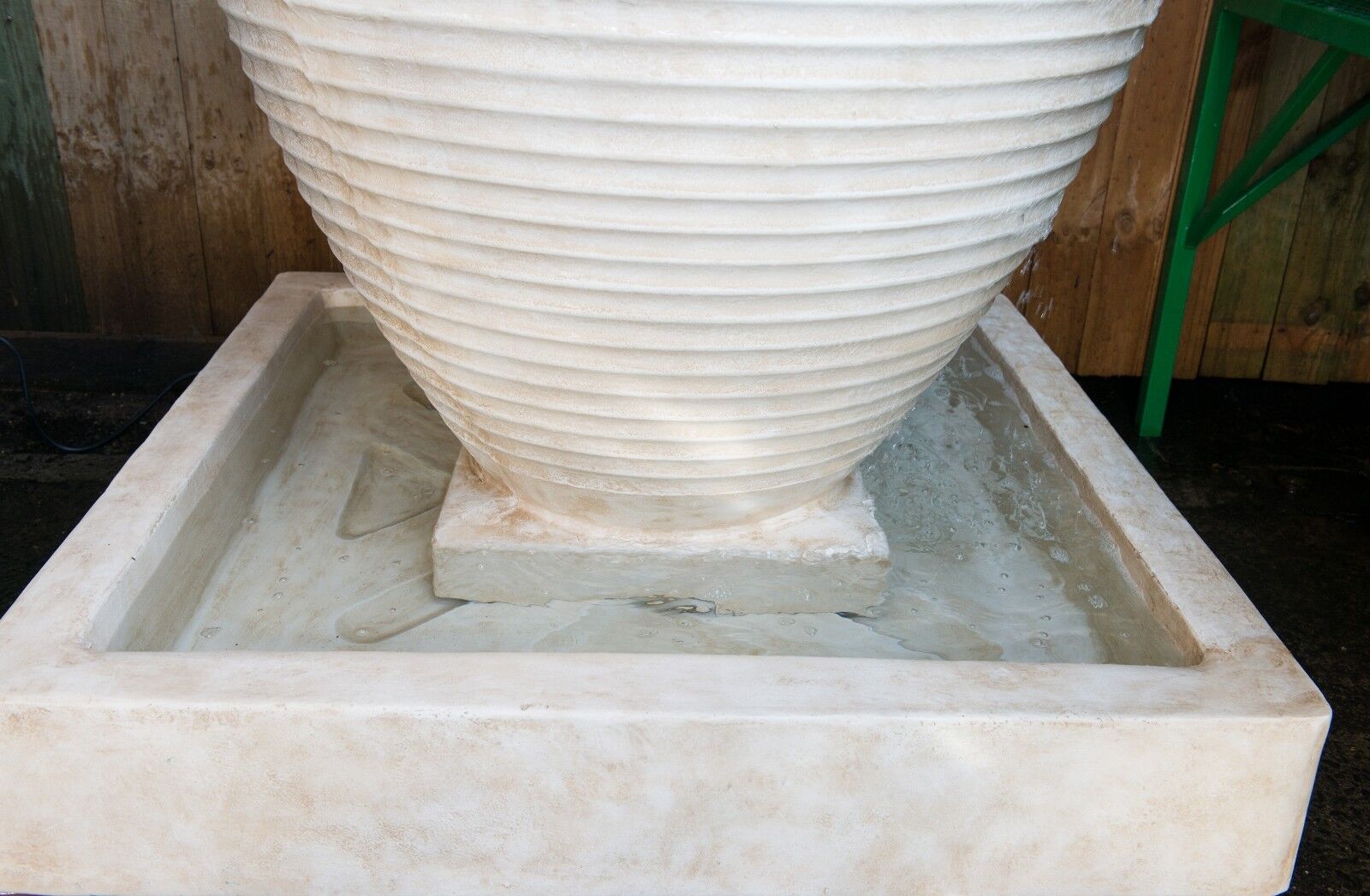
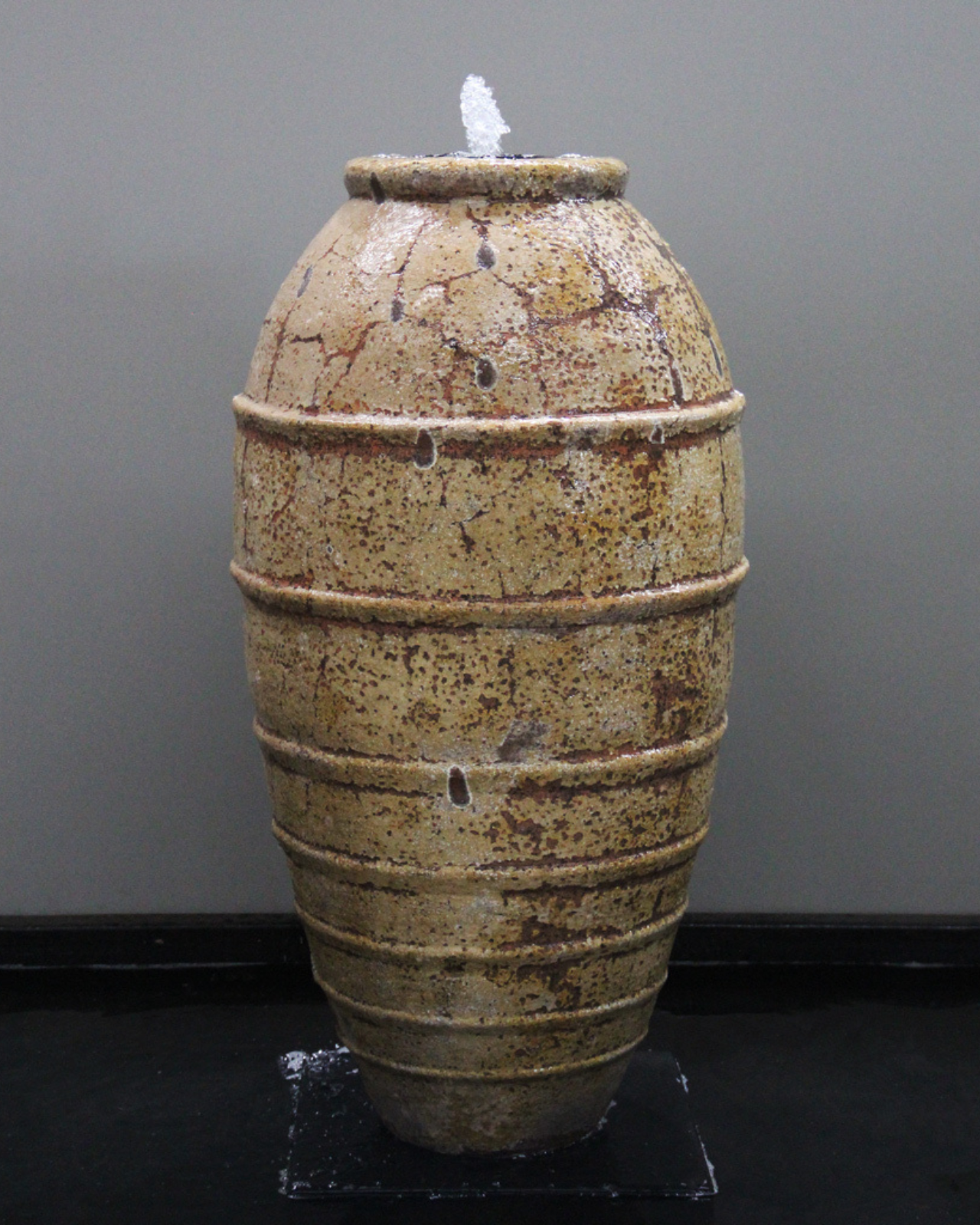

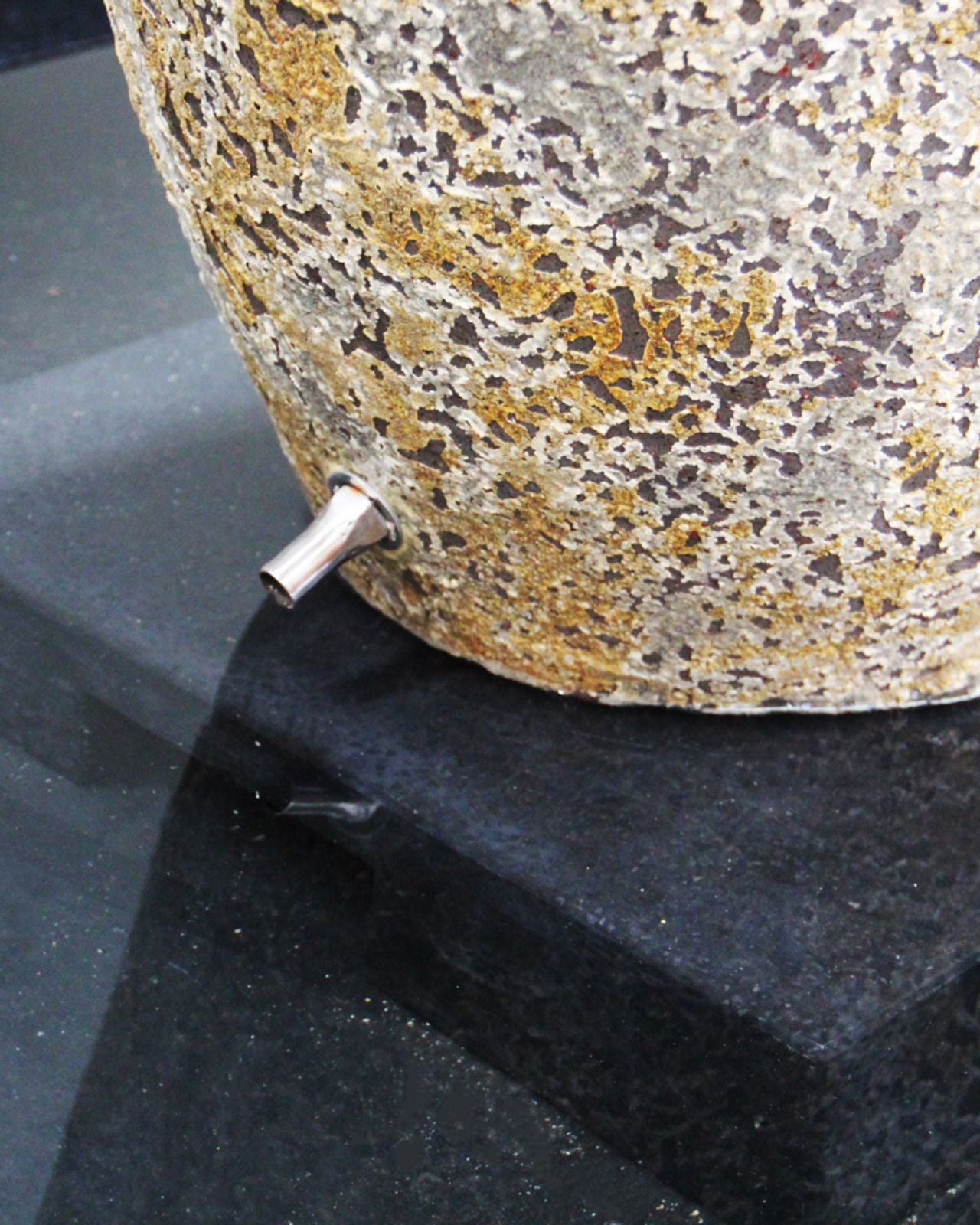
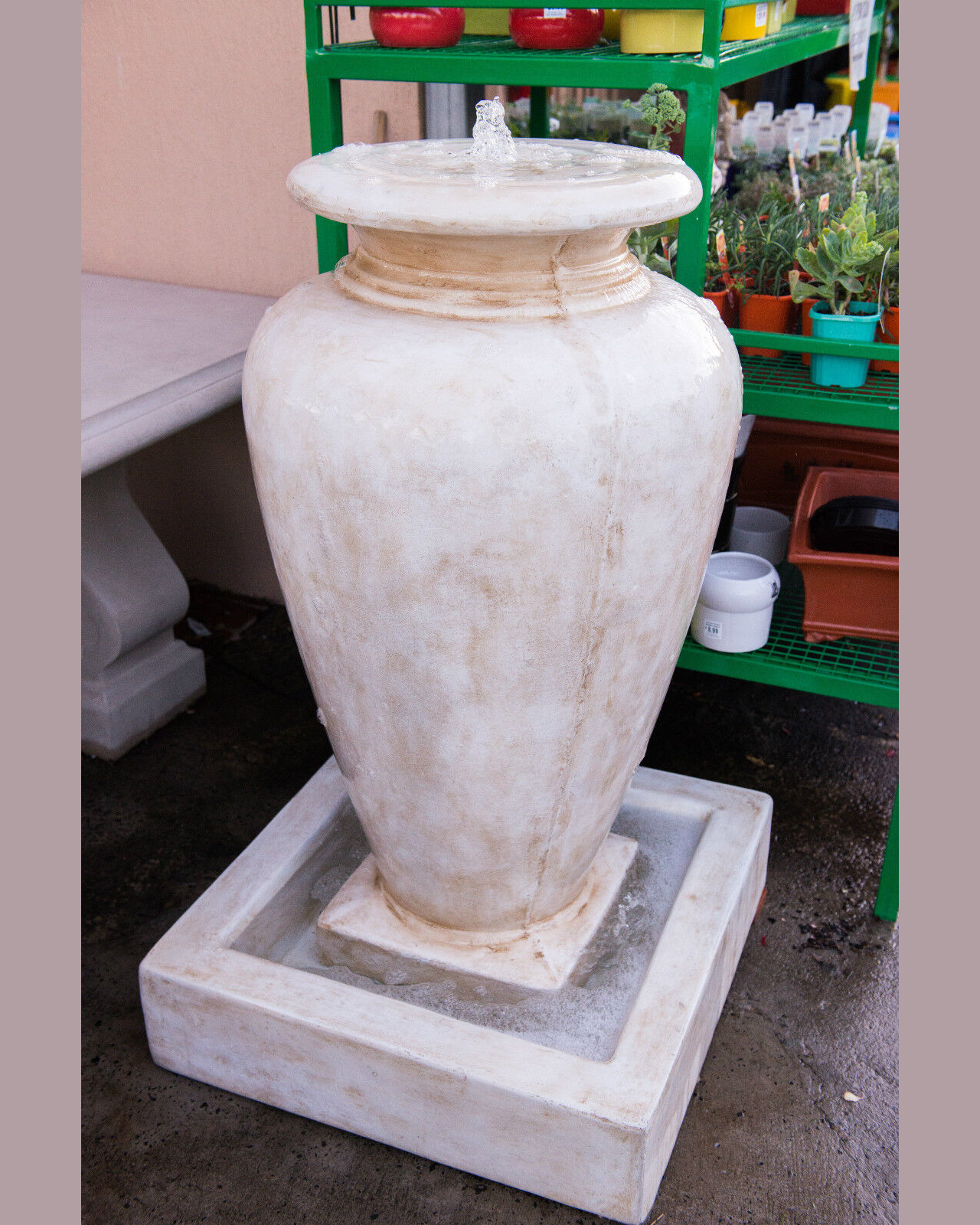
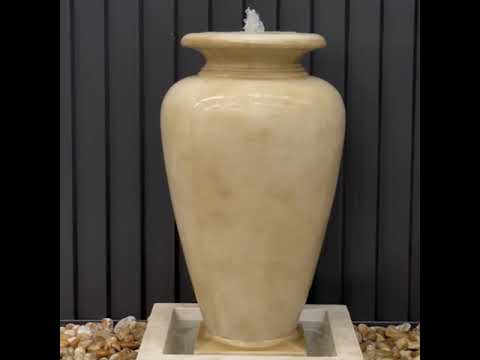
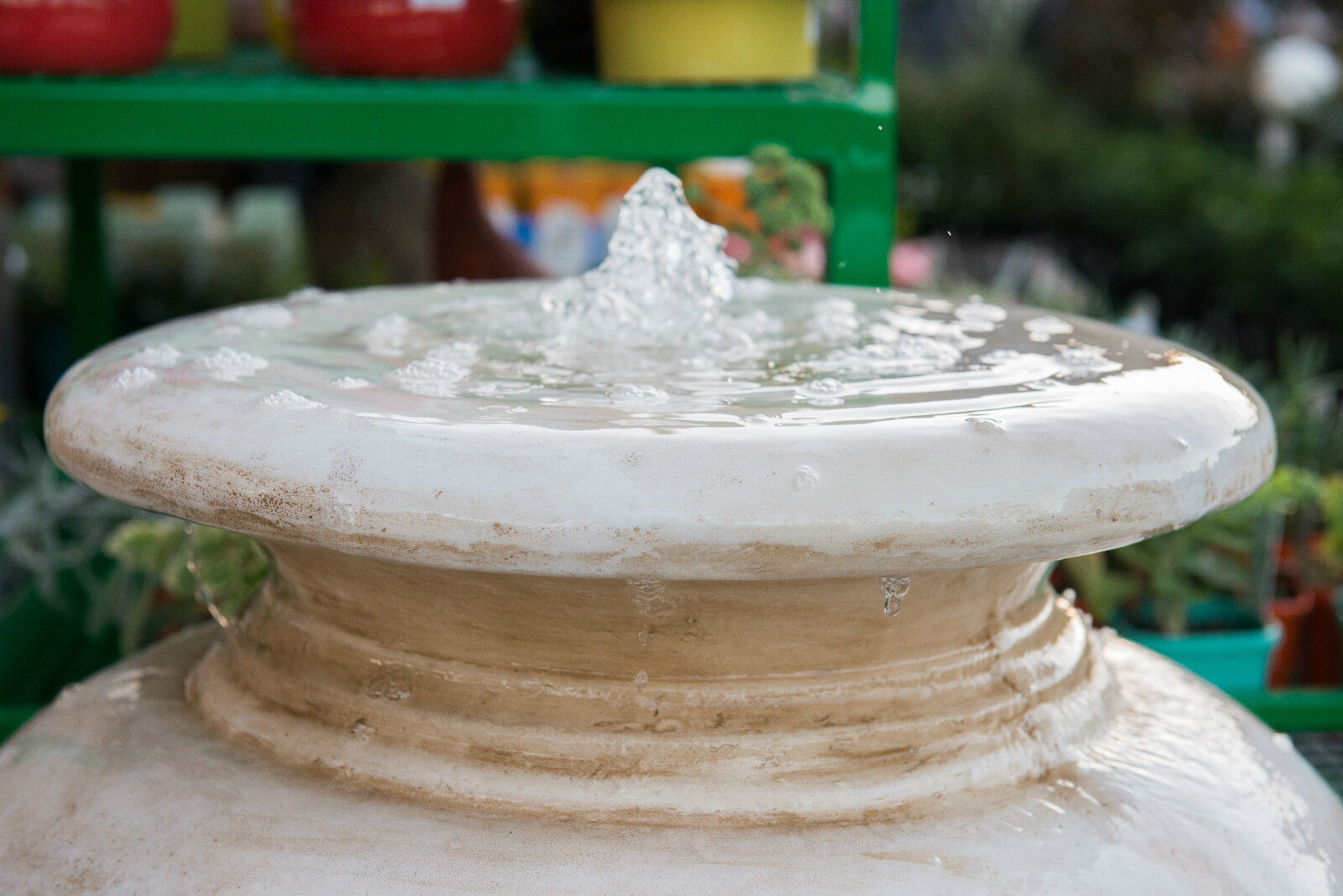
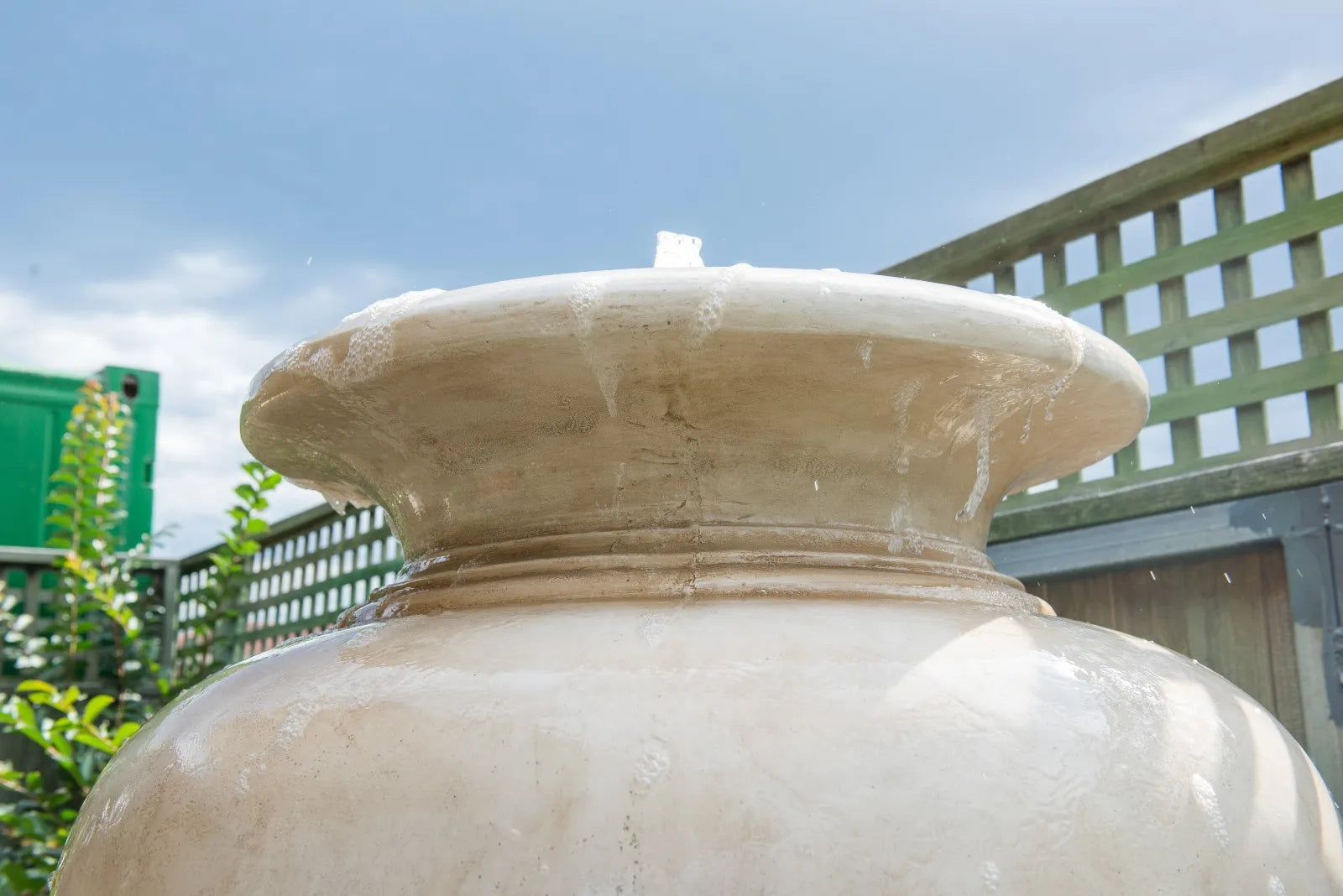
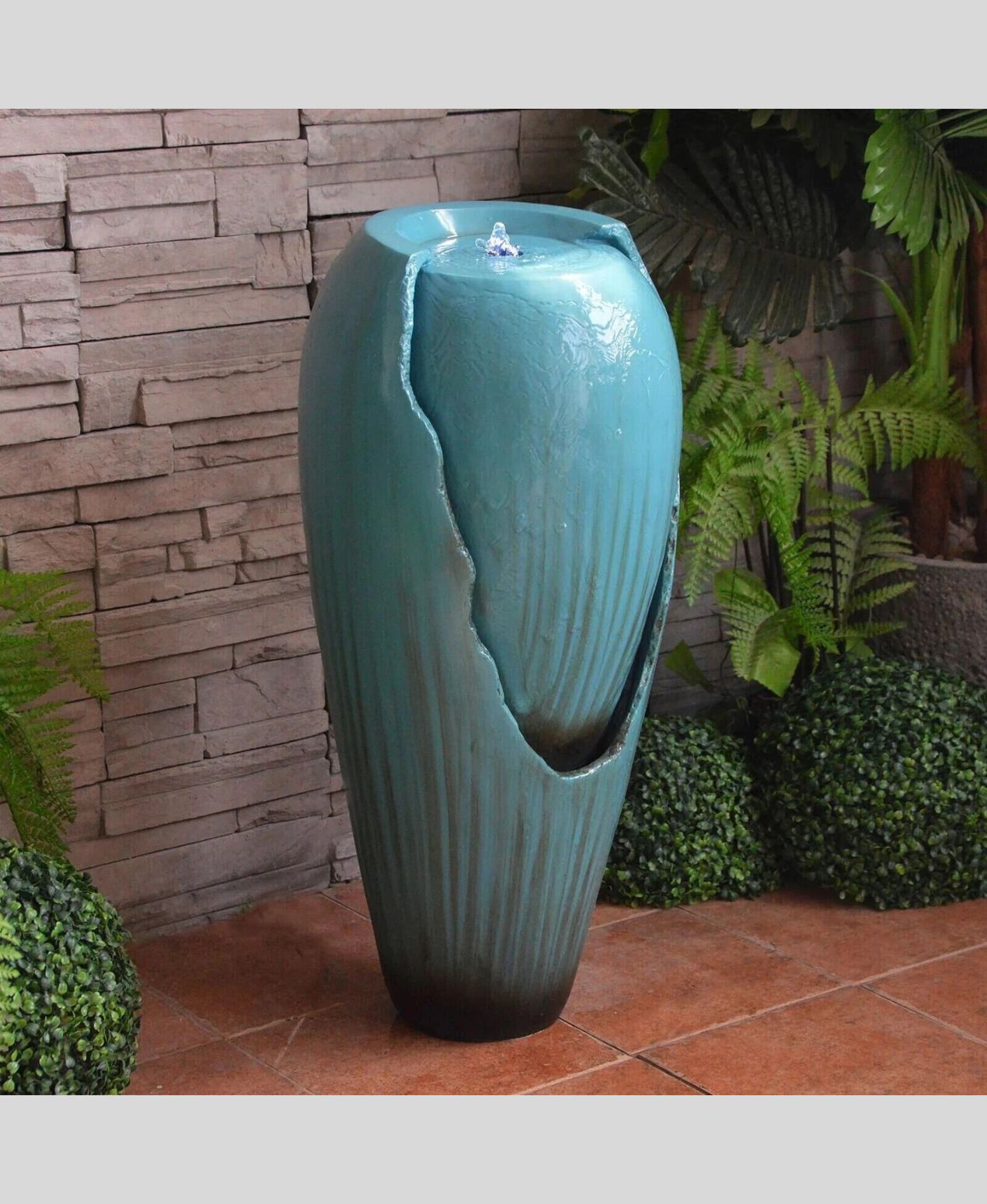
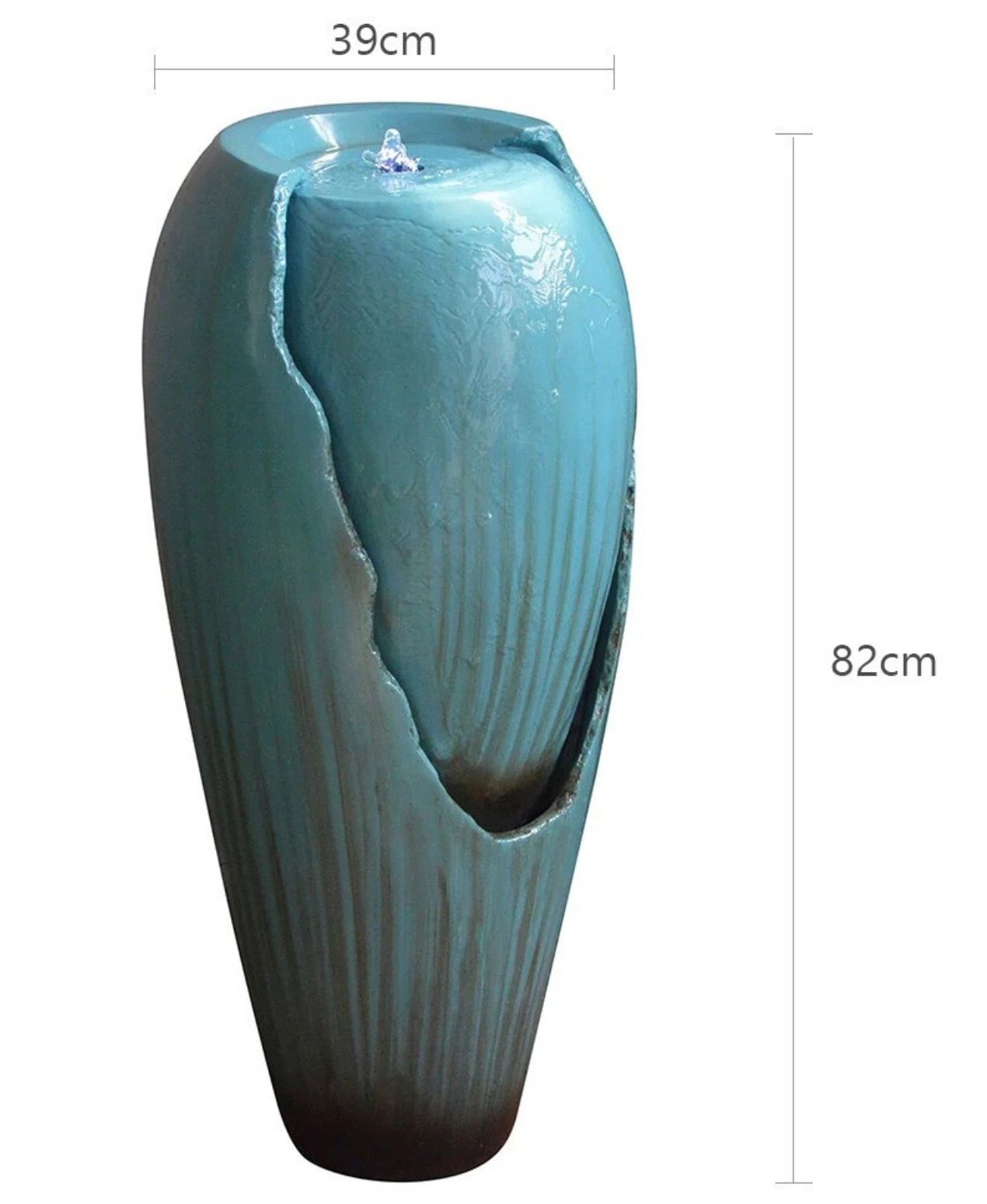
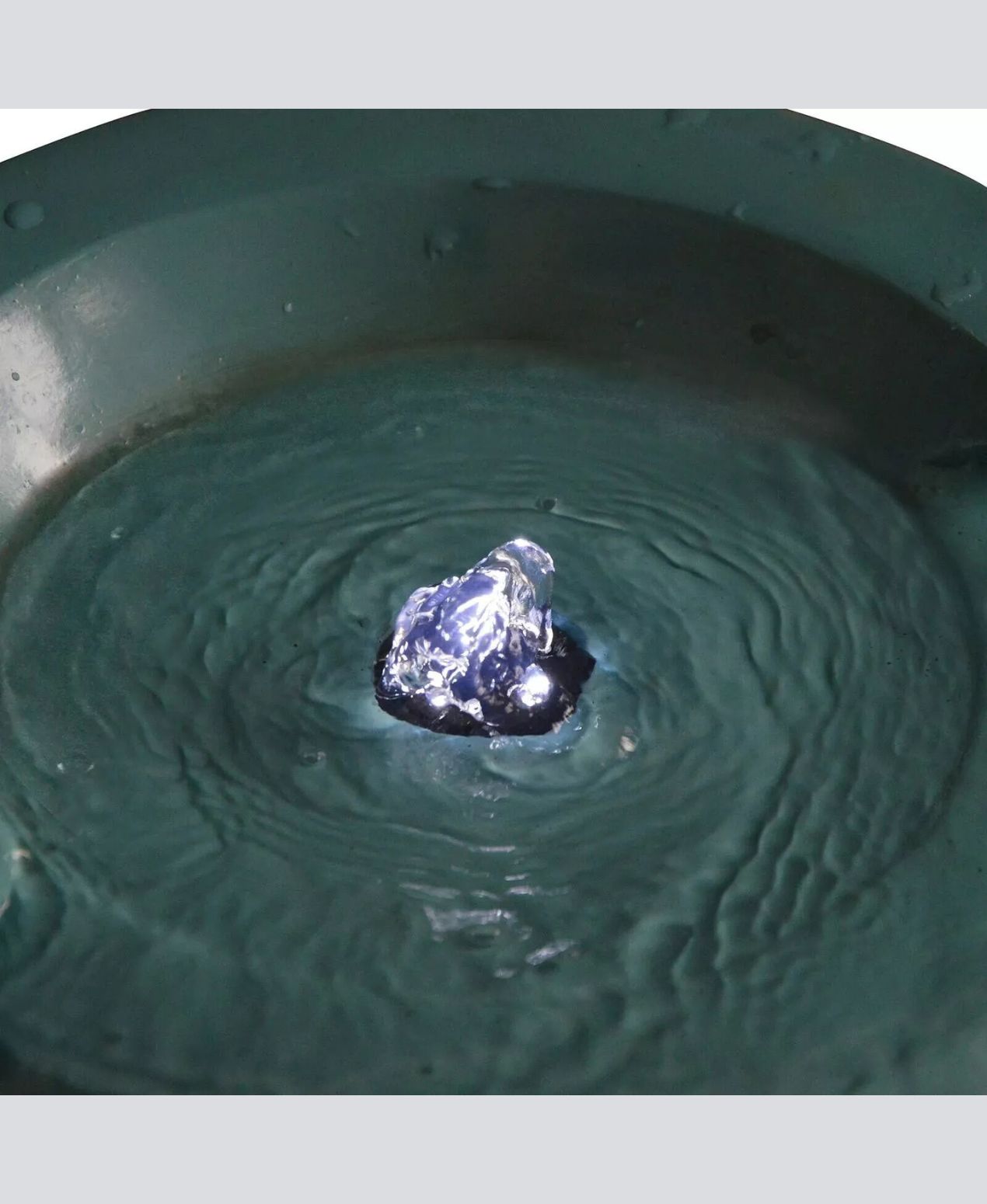

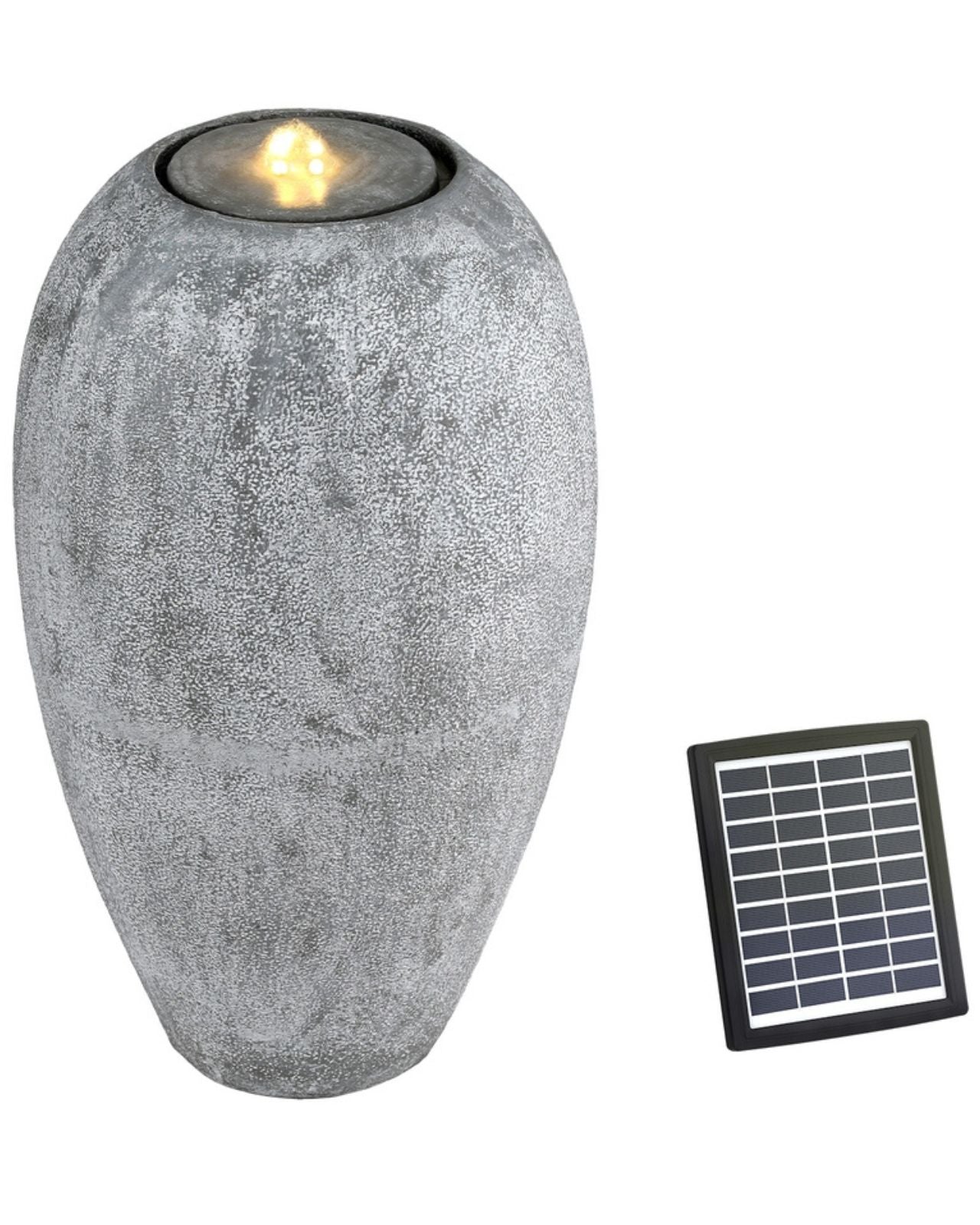
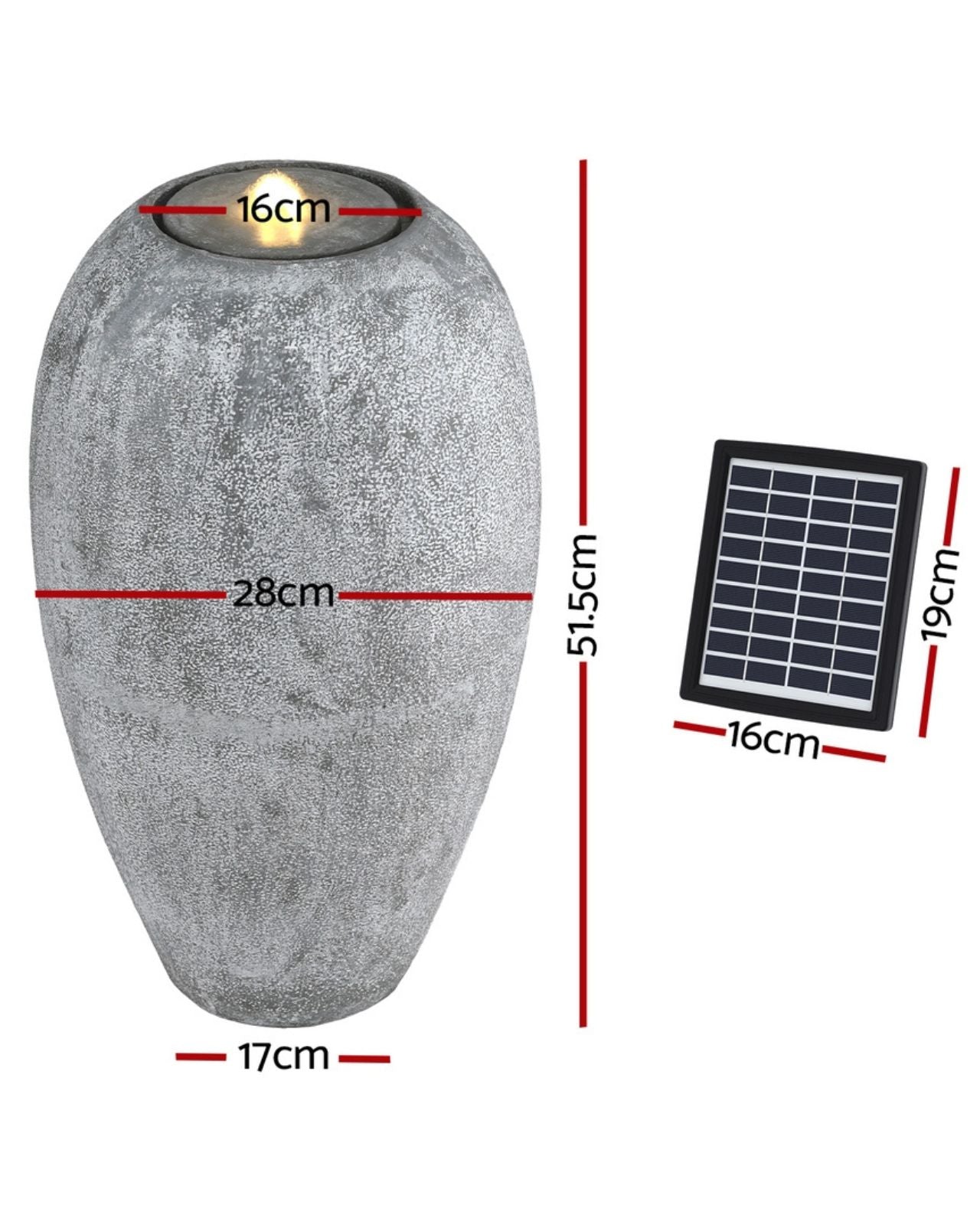
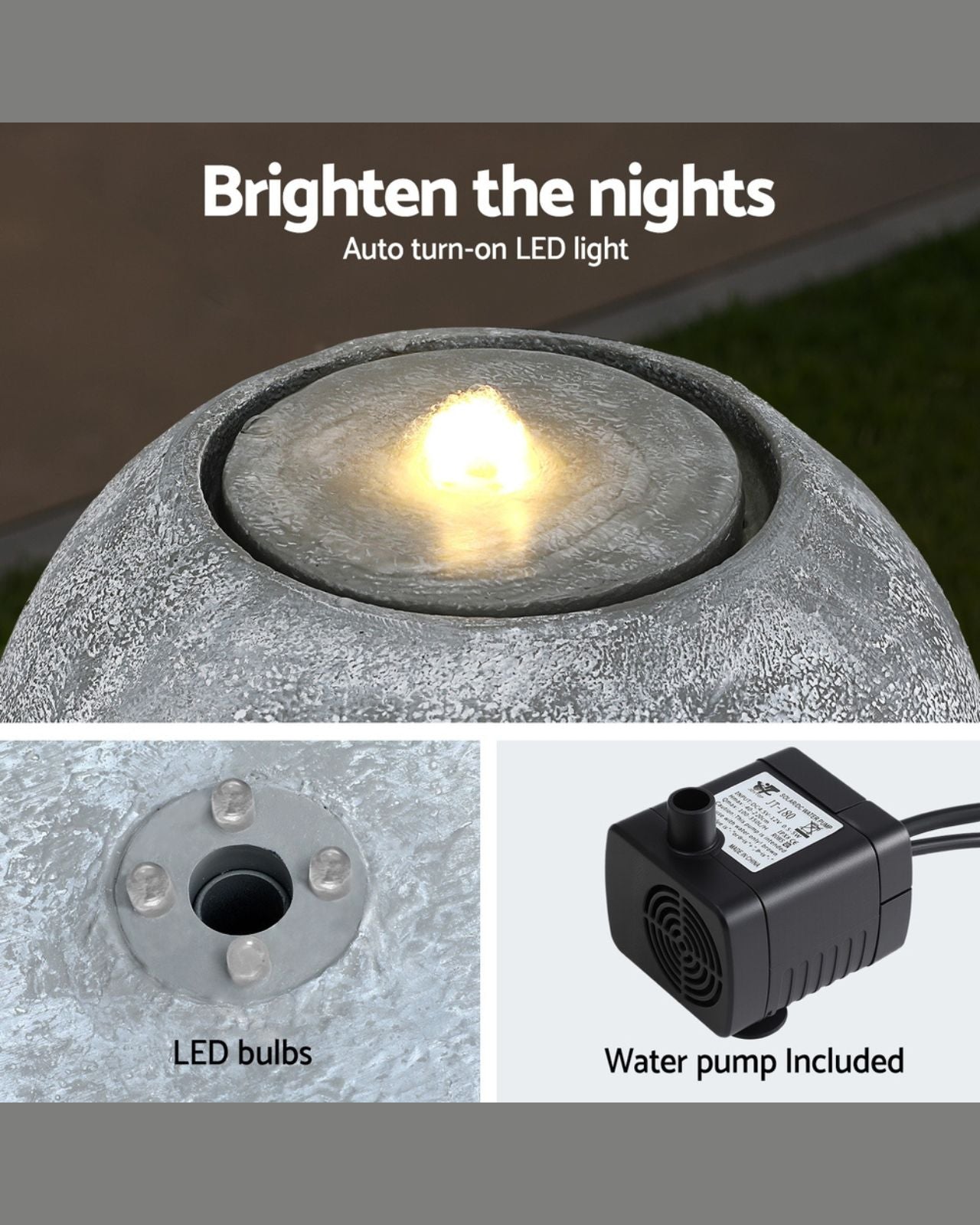
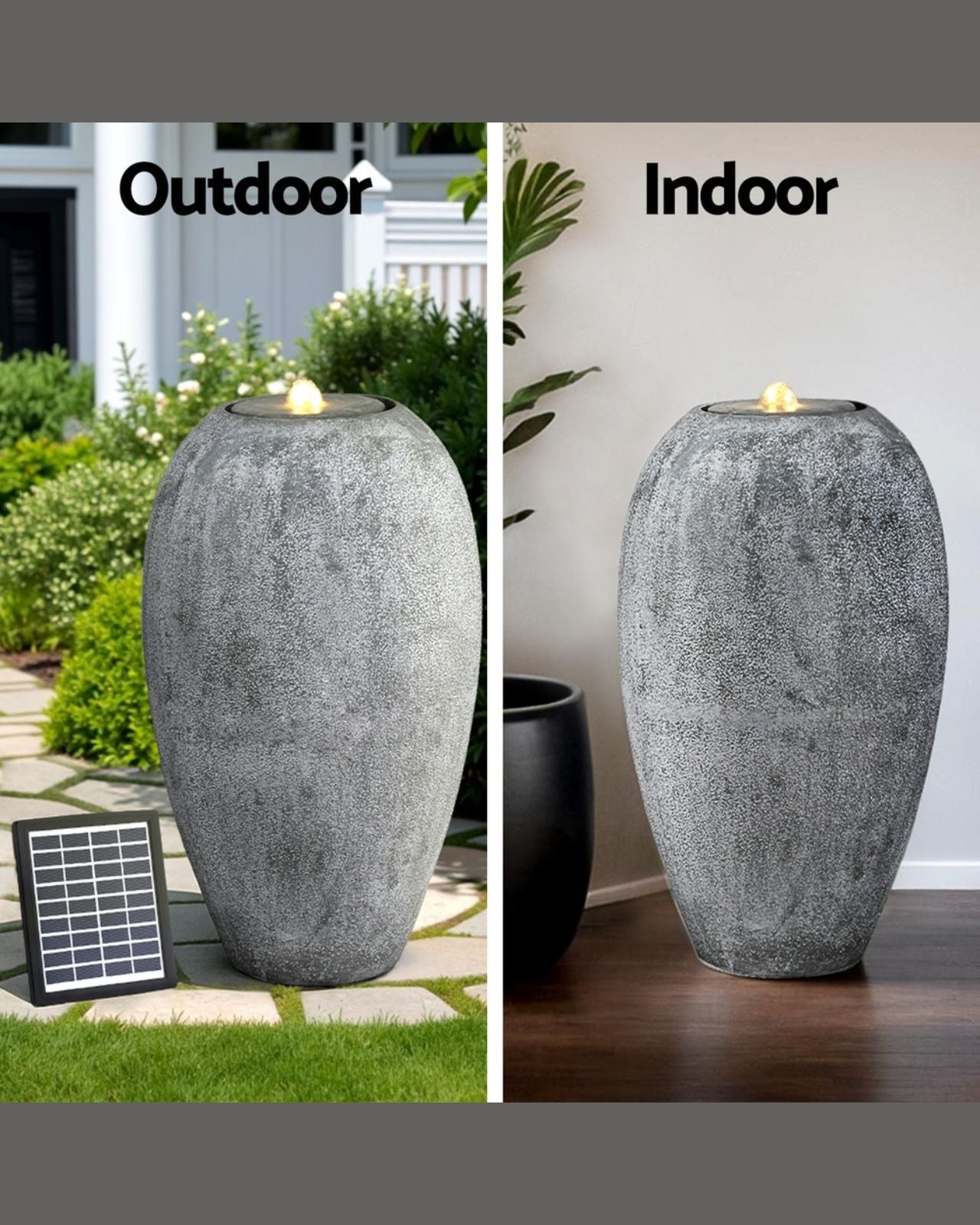
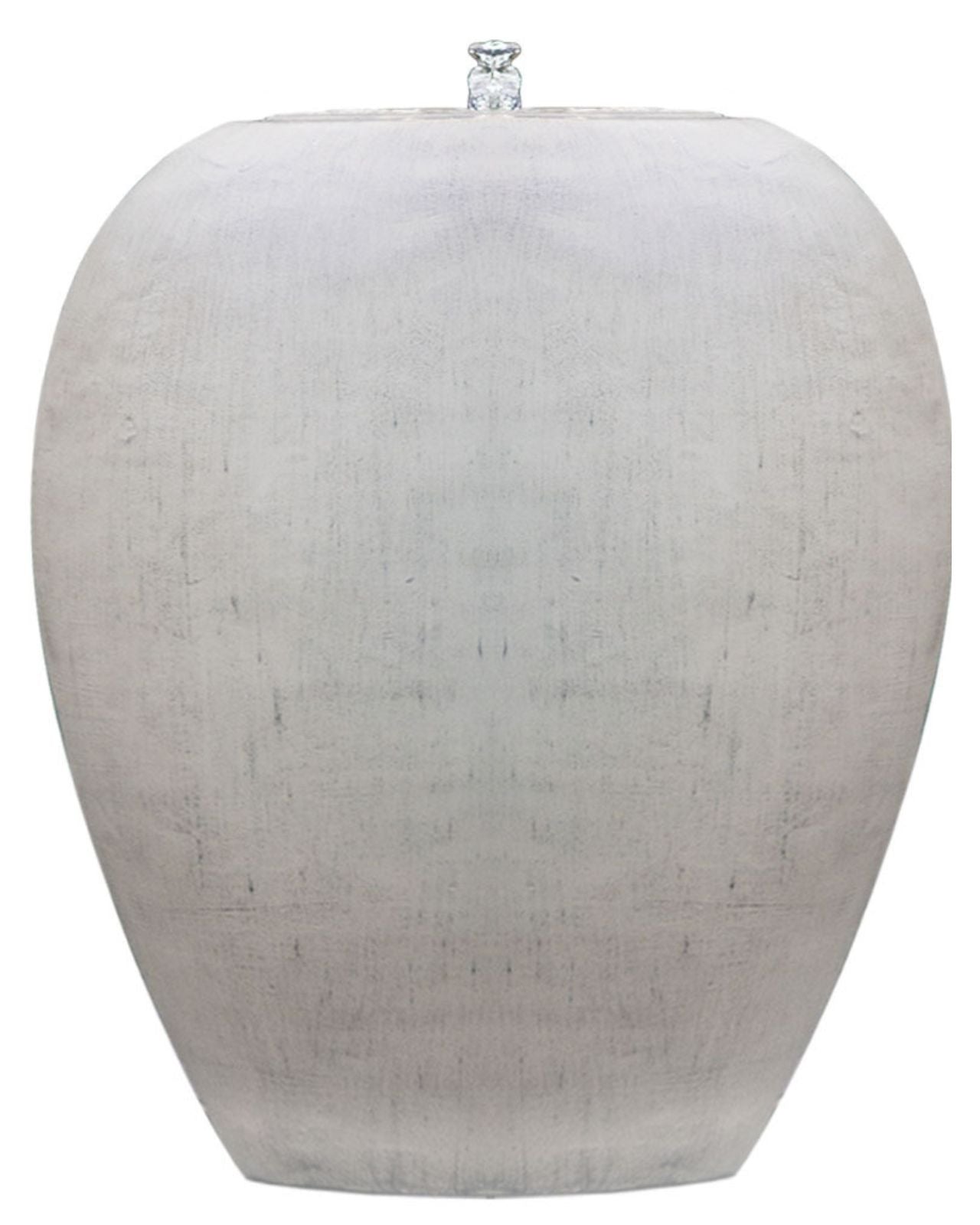
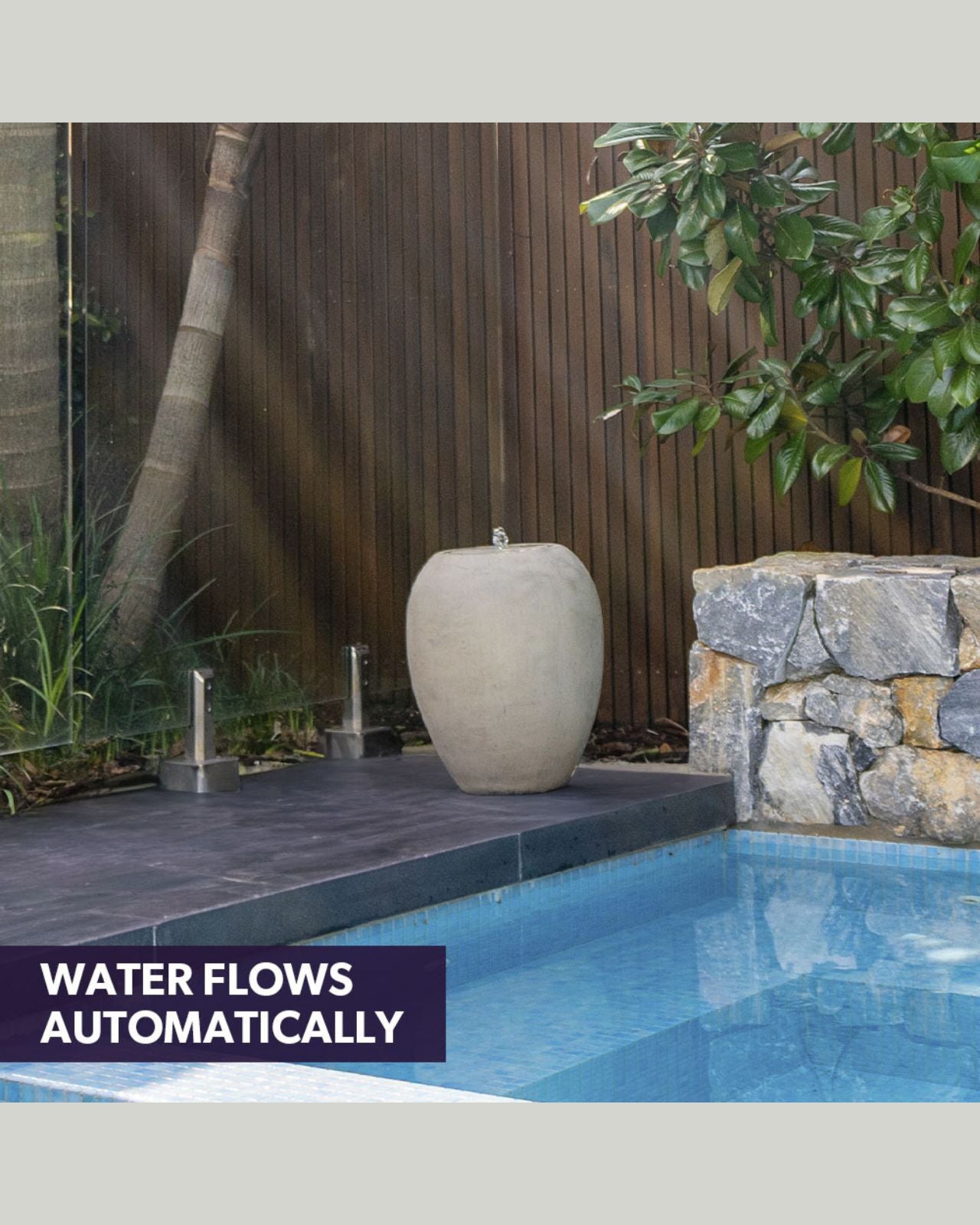
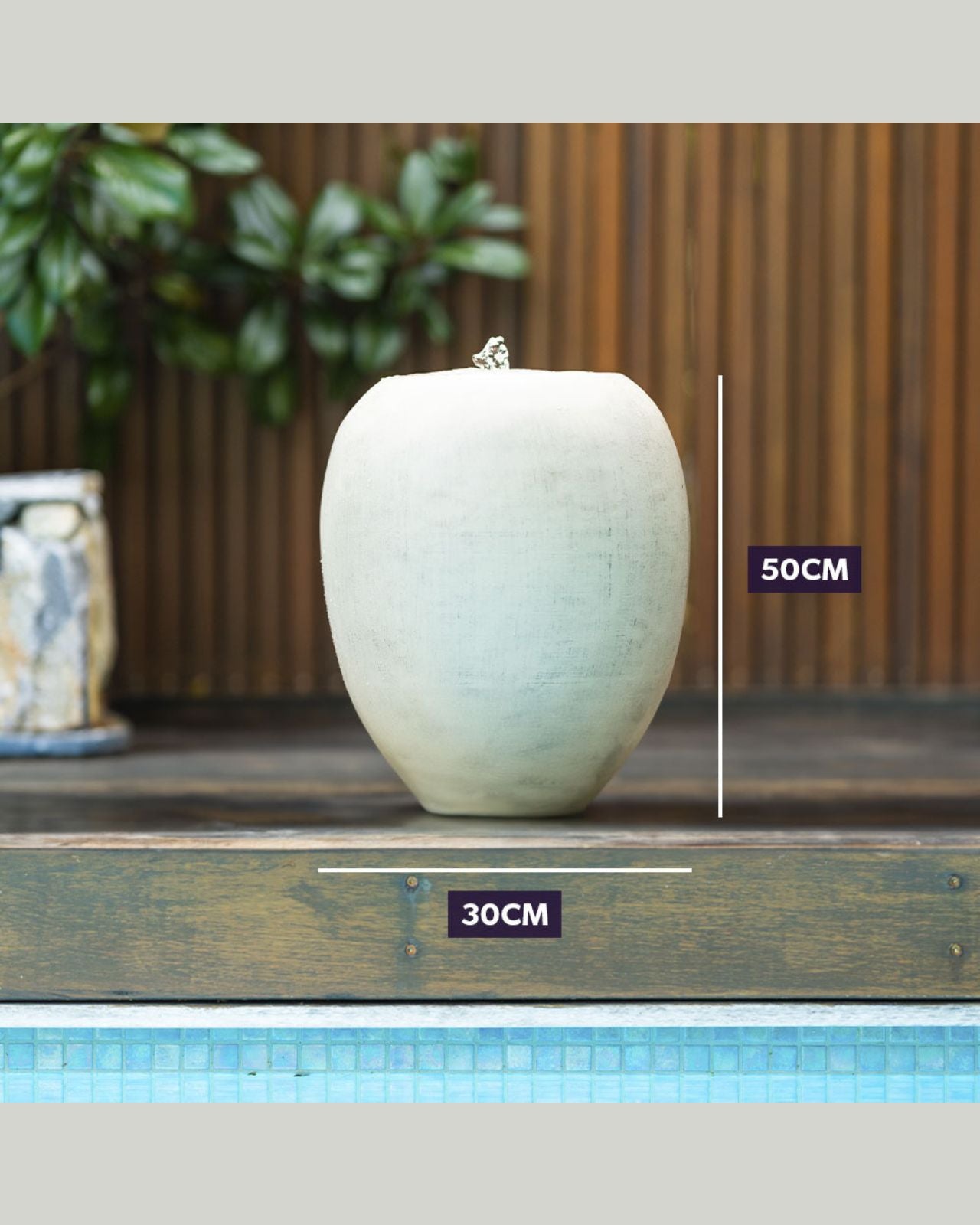

Share:
A Buyer's Guide to Water Feature Urns: What to Know Before You Invest
From Quarry to Garden: The Journey of Limestone Water Features